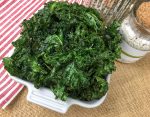 You may already grow herbs on your kitchen windowsill. What what about microgreens? These powerful greens have only been “a thing” for about 20 years when a chef in Chicago made them all the rage. Here lately they are raging again and farmer’s markets and health food stores are offering them right next to the prepared salads.
You may already grow herbs on your kitchen windowsill. What what about microgreens? These powerful greens have only been “a thing” for about 20 years when a chef in Chicago made them all the rage. Here lately they are raging again and farmer’s markets and health food stores are offering them right next to the prepared salads.
But what are they?
When the seeds of fruits and vegetables develop tiny roots and their first true leaves start to show they are considered microgreens. They are in between the growth stages of sprouts (germinated seeds) and baby greens. Microgreens are typically harvested within two to three weeks after they have been planted in soil. Any herb or vegetable can be grown to become microgreens, but the most popular ones are fenugreek, mustard, pea, arugula, radish, basil, beets, broccoli, and kale.
Okay, so why do you want to eat them? Because they pack a powerful punch in the nutrition department, rich with vitamins, minerals, and enzymes. AND they are easy and cheap to grow at home. So why on earth not?
A study conducted by the University of Maryland College of Agriculture and Natural Resources determined that microgreens are more nutrient dense than their mature plant. Some microgreens showed results of up to forty percent more nutrients. The researchers measured vitamins C, E, and K and beta-carotene in twenty-five different varieties of microgreens. Some of the microgreens measured in the study included arugula, basil, cilantro, celery, daikon radish and red cabbage.
Microgreens are packed full of minerals, antioxidants and other nutrients such as:
- Vitamin C – Vitamin C is a powerful antioxidant that helps prevent damage done to cells by free radicals. Go for red cabbage microgreens to get the highest vitamin c.
- Vitamin E – Daikon radish microgreens contain the highest amount of Vitamin E. Vitamin E is an antioxidant that helps slow down the aging process of cells and prevents free radicals from causing any damage to cells.
- Vitamin K – Another vitamin heavily found in microgreens is Vitamin K. Vitamin k is responsible for bone and blood health. It is responsible for blood clotting or coagulating.
- Phytonutrients – Although not essential for life phytonutrients are great for the body because of their anti-inflammatory properties. Phytonutrients are compounds that help protect and increase the longevity of the plant.
- Beta-Carotene – Beta-Carotene is commonly found in carrots and has since been discovered in microgreens according to the study done at the University of Maryland. Beta-carotene is a pigment that is converted into an antioxidant called vitamin A. Vitamin A helps maintain the health of skin, eyes, and vision.
- Enzymes – Microgreens are rich in enzymes that help break down food and aids in digestion.
The high nutrient content of microgreens helps fight against and prevents diseases, lowers your risk of obesity, diabetes, heart disease and high blood pressure. As you consume microgreens you will notice increased energy levels, weight loss and clearer skin. Simply add them to salads, smoothies or juices. Microgreens go great with sandwiches and pesto as well. Find them at your local farmers market or grow them yourself for convenience and affordability.
If you are ready to get started growing your own edible houseplants I recommend Microgreens: How to Grow Nature’s Own Superfood



